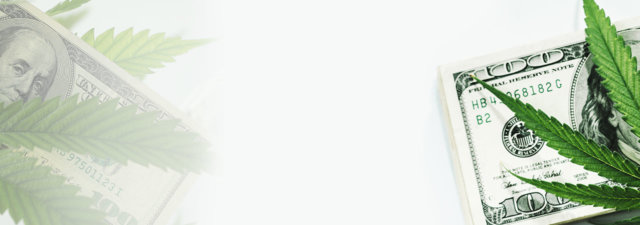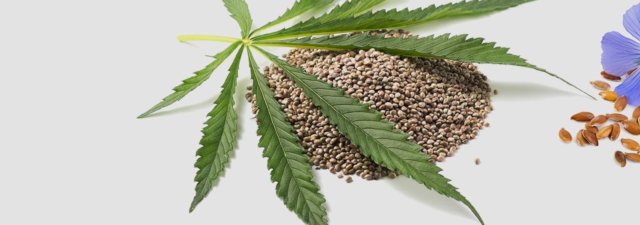Marijuana use was extensive in ancient civilizations. Cultures in China, Persia, and Japan, among others, used weed for religious purposes but also weren’t afraid to consume it to enjoy an intoxicating high. Not only did the plant NOT lead to the downfall of these kingdoms, but it was also a major part of their growth for a portion of history.
Marijuana has been used in India for over 4,000 years and remains a key ingredient of a popular beverage used every day. Read on to find out six cool facts about the history of marijuana in India.


According to legend, a religious figure who lived about 8,000 years ago saw immense illness and suffering. He pleaded with the gods for help. They took pity on him by teaching him medical knowledge of the Ayurveda, a holistic and herbal medicine system still practiced today in India and other places.
It is a nice story, but marijuana probably wasn’t used in India until 2,000 BC, and the date doesn’t match what we know about early Indian history. For instance, the main theoretical ideas of Ayurveda were probably developed less than 3,000 years ago.
There is a suggestion that the Indus Valley Civilization had reached India by 6,000 BC, not 3,300 BC, as was previously believed. That civilization had all but vanished by around 1,700 BC.
By that time, another group appeared on the horizon, the Aryans, possibly responsible for introducing weed into India. These invasions likely occurred between 2,000 BC and 1,600 BC.

One of the first literary mentions of cannabis’ mind-altering properties appears in the fourth Veda, better known as the Atharvaveda, which translates to ‘Science of Charms,’ between 1,200 BC and 900 BC. The book said weed was one of the five ‘sacred’ plants, and a guardian angel lived among its leaves. Marijuana was a source of happiness and joy, a wonderful plant that provided delight and eliminated fear.
The Atharvaveda states that the gods specifically created weed for the pleasure of humankind. What happened was that the gods stirred the heavens at the peak of Mount Mandara, which likely refers to Mount Everest. Amrita, celestial nectar, fell to Earth, and a hemp plant sprouted from it.
The book states that Shiva, the deity of death and time in Hinduism, went into the fields to get some time alone. It was a blisteringly hot day, so he found shade beneath what proved to be a large marijuana plant. His curiosity prompted him to eat some of the leaves, and he enjoyed them so much that he declared them his favorite food. From that point onward, Shiva became known as the Lord of Bhang.
Another section of the Vedas refers to a magical plant called soma, which may have been a deity. Any mortal who ate it also became a god. In any case, priests routinely beat the plant with stones during religious rituals and mixed the pulp with water to create a drink they enjoyed during ceremonies. It seems like soma was NOT marijuana and probably refers to ‘magic’ mushrooms such as fly agaric (Amanita muscaria).

Bhang is made from the cannabis plant’s leaves and has been used in food and drink for at least 3,000 years. It is combined with almonds, pepper, ginger, sugar, pistachios, and poppy seeds and boiled with milk or eaten with yogurt.
Throughout ancient India’s history, its holy men believed that they needed to be intoxicated with bhang to communicate effectively with the gods. Another legend claims that the Buddha ate nothing but a single hemp seed each day for six years. This difficult ritual enabled him to achieve enlightenment, which developed into the Buddhist religion first formed in northern India.
Even today, bhang is eaten in India and rolled into small balls before being consumed. The fat in the milk helps extract marijuana’s THC, but when you ingest it, the effects take longer and are inconsistent.
According to the Narcotic Drugs and Psychotropic Substances (NDPS) Act, 1985, there are restrictions on the consumption of cannabis or any of its byproducts. However, the NDPS Act does NOT make bhang consumption an offense because it comes from the plant’s leaves. In contrast, ganja, made from the buds, became illegal. There are tens of millions of bhang users in India, so it is just as well that it remains legal!
Today, you can still easily find bhang in India. The government licenses street stands in some areas! However, you must be careful because not all regions tolerate the use of India’s ancient drink. It is banned outright in Assam, and you need a special license to eat, possess, sell or manufacture bhang in Maharashtra.
Bhang remains a key component of festivals such as Kumbh Mela and Maha Shivaratri. Kumbh Mela is a significant pilgrimage in Hinduism and takes place approximately every 12 years. Maha Shivaratri is an annual festival celebrating Shiva, so you can take a guess what the festivities involve!

The East India Company was formed in Britain in 1600 to trade in the Indian Ocean region but soon controlled large parts of the Indian subcontinent. British rule in India likely began in 1612 and didn’t end until the Partition of India in 1947.
In 1798, the British Parliament enacted a tax on ganja, bhang, and charas to reduce marijuana consumption in India. The British were staggered by the level of weed usage in India and believed they needed to reduce the intake for the sake of the natives’ health and sanity.
It didn’t work. By the 1890s, the British decided that the use of marijuana in India was so extensive they needed to perform a detailed study to determine the extent of its use. They incorrectly believed that weed was driving natives insane and endangering their health. In the end, they realized that the suppression of bhang was completely unreasonable and unnecessary.
According to The Report of the Indian Hemp Drugs Commission, completed in 1894, bhang was ancient and had religious sanction amongst Hindus. Moreover, society was suffering greater harm from alcohol consumption. It was also determined that attempting to prohibit the substance in India would have led to a national outcry, would be incredibly hard to enforce, and ultimately lead to increased use of other dangerous narcotics.
Another review in 1957 discovered that bhang was still widely used by construction workers at the end of a day to help them relax. It was also used in Hindu religious ceremonies. Over sixty years later, nothing has changed, despite global attempts to ban marijuana.

Even though weed has been used in India for millennia, there are relatively few mentions of it being used for medicinal purposes. For example, the first Ayurveda reference to medicinal marijuana in the AD era was probably written in the 9th or 10th century.
That said, the Atharvaveda did mention the use of bhang to relieve anxiety. The ancient Sanskrit text Sushruta Samhita, written anywhere between 600 BC and 500 AD (historians cannot agree on the text’s likely age), mentions the plant as a possible treatment for diarrhea, phlegm, and catarrh. By the 10th century AD, there were further mentions of cannabis being used to treat gastrointestinal disorders, headaches, insomnia, and dysentery.
India continued its marijuana tradition, particularly for medical and religious purposes, long after other nations began prohibiting the substance.
Today, sadhus (religious people who follow a path of spiritual discipline) continue to consume cannabis as part of rituals. They commonly use the female plant’s resinous buds or resin in chillum, small clay pipes. The process involves a group of people getting together, smoking marijuana around a holy fire called dhuni, with the second user dedicating the act to Shiva.
However, a growing number of sadhus are moving away from the chillum as they believe it is a kind of weakness since they’re supposed to be sacrificing a materialistic life to attain salvation!
The Single Convention on Narcotic Drugs was an international treaty created in 1961. It classified marijuana as a hard drug. Rather than lie down and accept it, Indian delegates opposed prohibition because of its impact on their country’s religious and social customs.
In the end, India agreed to limit the export of Indian hemp, but bhang was left out of the legal definition of marijuana. Single Convention on Narcotic Drugs signatories had 25 years to outlaw non-scientific and non-medical usage of marijuana. The Indian government waited as long as possible before passing the NDPS.
Today, the NDPS ensures that marijuana is illegal in India. It is against the law to possess cannabis flower, bud, or byproducts. Excise laws also exist in several Indian states prohibiting the plant’s usage, possession, or sale. If caught, you could face a 6–12-month prison term and a fine of up to Rs10,000.
This is a shame, given the country’s rich history of marijuana use and its continuing importance in religious and spiritual festivals. Fortunately, bhang remains legal in most Indian states, so be sure to grab some if you ever visit India.







![The Marihuana Tax Act of 1937 [All You Need to Know]](https://wayofleaf.com/wp-content/uploads/2019/01/history-of-the-marihuana-tax-act-640x225.jpg)
![How to Prevent Developing a Cannabis Tolerance [Must-Know Trick]](https://wayofleaf.com/wp-content/uploads/2018/01/wol_reduce-marijuana-tolerance_1920x450-640x225.jpg)



